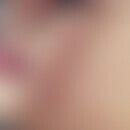DefinitionThis section has been translated automatically.
- On the one hand, wood dust is classified as potentially carcinogenic, on the other hand, exposure to wood dust increases the risk of respiratory and skin diseases, which can be caused by both allergic and non-allergic pathomechanisms.
- Workers in the woodworking industry are often exposed to a variety of hard and soft wood dusts. Wood dust exposure is therefore a primarily occupational source of hazardous substances. While in the 1970s there were frequent reports of cases in the woodworking industry, today's case reports are limited to hobby carvers, musicians and people after wearing jewellery made of exotic wood. This is due on the one hand to the introduction of better extraction systems in the factories, but also to the sharp decline in imports of exotic wood species from South and Central America as part of the environmental movement.
ClassificationThis section has been translated automatically.
- In contrast to numerous wood species, which predominantly cause allergic late type reactions, i.e. contact eczema on the skin, woods with a high protein content (e.g. abachi wood) are effective respiratory sensitisers for rhinitis and asthma.
- Woods which have been described as the cause of allergic contact eczema come primarily from tropical and subtropical regions (Africa, Asia, South and Central America). Among the allergenic wood species that are potent here are:
- Pao ferro (Machaerium scleroxylum)
- Rio rosewood (Dalbergia nigra)
- East Indian rosewood (Dalbergia latifolia)
- Teak (Tectona grandis)
- Peroba wood (Paratecoma peroba)
- Mansonia (Mansonia altissima).
You might also be interested in
Occurrence/EpidemiologyThis section has been translated automatically.
- Across Europe, around 3 million workers are exposed to wood dust. In Germany alone, there are about 700,000 employees. Exposure to wood dust poses an increased health risk for all these employees.
- Type I allergies (leading asthma and/or rhinitis) to wood are rare. Native woods and coniferous woods are largely unknown as allergy triggers. The frequency of type I sensitisation to beech and spruce wood among employees exposed to wood dust is estimated at 3-5%. A comparably low sensitization prevalence is assumed for pine wood, whereas tropical wood species, such as abachi wood, cause significantly higher Type I sensitization prevalences of up to 30%.
- Type IV allergies - allergic contact eczema - caused by wood are also rarely encountered today.
EtiopathogenesisThis section has been translated automatically.
- Sensitization is usually acquired either by wood dust in the wood processing industry or by intensive contact with finished wood products, such as wooden shoes, musical instruments and wooden jewelry.
- Sensitization is generally caused by the ingredients of the heartwood. In addition to alkaloids, glycosides, saponins, flavonoids and phenols, the benzo-, naphtho-, furano- and phenanthrene quinones are of essential importance.
LocalizationThis section has been translated automatically.
On the skin, the symptoms of the disease are found where the wood dust particles adhere most intensively or where there is greater moisture penetration: exposed parts of the body such as the face, neck and arms as well as the genital region and the bends of the joints.
ClinicThis section has been translated automatically.
On the skin, the clinical picture corresponds to that of acute contact eczema accompanied by extensive redness, swelling, papules and blistering. Subjectively, there is usually severe itching, occasionally burning.
DiagnosisThis section has been translated automatically.
- The diagnosis of wood dust related allergic diseases is currently only possible to a limited extent due to the lack of allergen extracts. Consequently, the identification of allergens is often hardly possible.
- It is due to the variety of different, potential wood allergens that there is no uniform "wood allergen" which can be used as a test substance for the detection of type I and/or type IV sensitisations. It is therefore necessary to investigate individual wood dust extracts of the wood species in question for each exposure situation.
- Only very few commercial wood extracts are available for in vivo testing and their quality is not yet standardised. The standardisation of wood extracts is complex and difficult. One and the same wood entity often has a different allergen content depending not only on the storage time of the wood but also on the country of origin.
- Specific IgE on woods can only be specifically produced (e.g. ImmunoCAP of Phadia, D-79010 Freiburg) and the IgE reactivity can be specified by inhibition tests. The clinical relevance of in vitro sensitization can be verified by skin tests and workplace inhalation tests.
- The test substance for the epicutaneous test is a wood mix 20.0% pet. (pine, spruce, birch, teak) is commercially available from Chemotechnique Diagnostics, SE-235 39 Vellinge. Otherwise, the use of the pure, sensitizing ingredients of the incriminated wood species is recommended, but in most cases this will hardly be possible in practice. Often there is no other choice than to prepare dust or shavings of the used wood species for the epicutaneous test:
- Wood dust from non-exotic wood species can be moistened with physiological saline solution and used for epicutaneous testing.
- Wood dust of exotic wood species should be prepared in Vaseline in at least 10% dilution for epicutaneous testing.
- Ethanol extracts of the respective wood can also be prepared and tested at 0.01-10% depending on the wood species. To exclude toxic test reactions, a sufficient number of control tests must be carried out!
TablesThis section has been translated automatically.
| No. | Test substance | Concentration [%] |
| 1 | Histamine (Positive Control) | |
| 2 | Physiological saline solution (negative control) | |
| 3 | Mahogany wood | 0,1 |
| 4 | Pine wood | 0,1 |
| 5 | Kapok | 0,1 |
| 6 | Spruce wood | 0,1 |
| 7 | Oak wood | 0,1 |
| 8 | Cotton | 0,1 |
| 9 | Abachi wood | 0,1 |
| 10 | beech wood | 0,1 |
| 11 | Fir wood | 0,1 |
| 12 | Walnut wood | 0,1 |
Note(s)This section has been translated automatically.
It remains a necessary task to further identify and characterise the wood allergens in order to be able to carry out sensitive and specific diagnostics of wood allergy in the future and to evaluate possible cross-reactivities of different wood species.
LiteratureThis section has been translated automatically.
- Frog PJ, Vulture J, Uter W, Goossens A (2011) Patch testing with the patients' own products. In: Johansen JD, Frog PJ, Lepoittevin JP (eds) Contact Dermatitis. Springer-Verlag, Heidelberg Dordrecht London New York, pp 1107-1119
- Hausen BM (1982) Frequency and significance of toxic and allergic contact dermatitis caused by Machaerium scleroxylum Tul. (Pao ferro), a substitute wood for rosewood (Dalbergia nigra All.). dermatologist 33: 321-328
- Kespohl S, Raulf-Heimsoth M (2010) Prevalence of wood dust sensitization. IPA Journal 3: 20-22
- Kespohl S, Raulf-Heimsoth M, Kotschy-Lang N, Maryska S, Brüning T (2009) Occupational IgE-mediated softwood allergy - proof of clinical relevance. Arbeitsmed Sozialmed Umweltmed 44: 170-171
- Kespohl S, Schulze J, Raulf-Heimsoth M (2008) Wood dust allergens become measurable. BGFA-Info 3: 10-11
- Schlünssen V, Skovsted TA, Schaumburg I, Skov PS, Sigsgaard T (2004) Wood dust sensitization among Danish woodworkers. On J Ind Med 46: 408-409
- Schulz KH (1957) Allergic contact dermatitis caused by exotic woods, especially Kambala teak. occupational dermatoses 5: 238-244
- Schulz KH, Hausen BM (1975) Contact eczema caused by plants and woods. dermatologist 26: 92-96
- Viardot-Helmer A, Merk HF, Hausen BM (2008) Late type sensitization against East Indian rosewood. dermatologist 59: 465-466
Disclaimer
Please ask your physician for a reliable diagnosis. This website is only meant as a reference.




